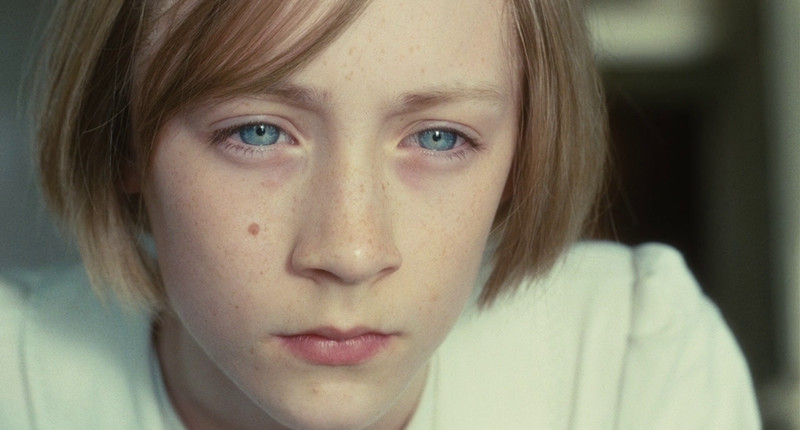
Sound in film can sometimes be seen as an afterthought; the final icing on the cake of a medium that is so visually driven. However, this is certainly not the case as many filmmakers and composers view music and sound as a much more integrated aspect of the film, one that can even play a huge role in the development of the drama as much as any visual element can.
Certainly the idea that combining different media to create a much more coherent and powerful medium is not a new concept, and can be seen back as far as the opera of composers such as Handel Mozart, who combined music, drama and word to create what was then a new artistic medium.
However it was in the late 19th century with the music dramas of Richard Wagner that really started taking the idea of a combination of different art forms to a new level. This inevitable progressed into the film world many years later, composers such as Max Steiner used aspects of Wagner’s compositional style in their film scores.
As this list discusses, there are more ways that sound can contribute to the drama of the film outside the idea of a soundtrack, which is really where directors started to think about sound and integrate it into film in many ways to challenge the visual medium.
Here are eight films that use sound and music in ways that work with (or against) the visual to add another layer to the drama of the story.
1. Pi (1998)
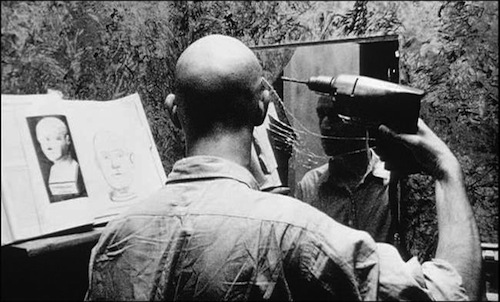
Darren Aronofsky’s 1998 debut Pi brings the audience into the schizophrenic world of Max Cohen (Sean Gullette), a number theorist who uses numbers to try and understand the world around him. Whilst using his computer to predict the stock market trends, it prints out a mysterious 216 digit number. Although initially skeptical, Max believes that this number is the key to understanding nature and our existence.
The film follows Max as he tries to evade a menacing Wall Street firm who believe the number can be used to predict the stock markets and a religious organisation who believe the number to be the unspoken name of god.
A low budget and surrealist styled film, Pi is a frightening and vivid experience for the audience that uses the relationship between sound and the visual to its advantage. In particular to this film, sound is used to allow the audience to transcend into Max’s world and experience the surroundings from his perspective.
One such scene that really showcases Pi’s use of sound to heighten our relationship with Max occurs around the 52 minute mark. After a failed attempt at a calculation on his computer, Max suffers from a cluster headache. The following scene artfully blends digetic and non digetic sound to create an uneasy and chaotic experience for the viewer.
The trigger for Max’s headache comes from hearing a sexual encounter from next door, although it is unclear whether this sound is actually coming from Max’s own head (meta-digetic) or is actually an off screen real sound.
A shrill drill sound can also be heard which is a noise that we are to interpret as within Max’s own head. This sound combined with the ambiguous sexual noises and the pained cries of Max create an uneasy, schizophrenic and distressing experience for the viewer and really allow us to understand the characters paranoid world.
This combined with a fantastic performance from Sean Gullette and some great editing of the visual powerfully carries the sense of discord to the audience, creating an emotional response that would not be achievable without both media being executed simultaneously.
2. Antichrist (2009)
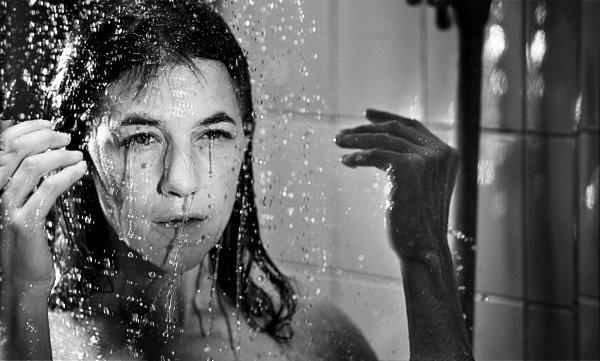
Perhaps one of Lars Von Tier’s most disturbing films, Antichrist is a fascinating movie that explores concepts of sexuality, human suffering, depression and mental illness. Perhaps sometimes overlooked due to its graphic sexual nature alongside its infamous ‘scissors’ scene, Antichrist is an artfully created and multi layered film that confronts many unsettling aspects of human behaviour.
Containing a fantastic soundscape created by composer Kristian Eidnes Andersen, the soundtrack relies heavily on prolonged eerie silences combined with burst of distressing sound design which add to the films disconcerting nature. However it is the first scene in which the sound and visual relationship is perhaps at its most interesting.
Shot in black and white, the opening scene is a stark contrast between the beauty of love and the anguish of death. This is achieved visually by capturing the passionate love making of protagonists He and She (Willem Dafoe and Charlotte Gainsbourg) woven between shots that portray the horrific accidental death of their child unfolding.
Sonically, we have the beautiful aria Lascia ch’io pianga by George Frederic Handel from his 1711 opera Rinaldo being performed. A delicate, beautiful and moving piece of music that tonally suggests feelings of love, beauty and calmness. This corresponds with the use of its musical key signature F Major, which 18th century composers associated with calmness and clarity.
The resulting audio visual juxtaposition creates a unique dramatic affect for the viewer, in which their senses are being toyed with by Von Tier. Visually, we are witnessing moments of beauty intertwined with the unfolding of a horrific accident, whilst sonically we are hearing this beautiful calming music that is only in tone emotionally with one of the visual events we are seeing.
This creates a sense of emotional confusion to the audience as the music and visual are not working together to convey the same emotion, but almost working against each other conveying contrasting feelings to the audience.
3. Psycho (1960)
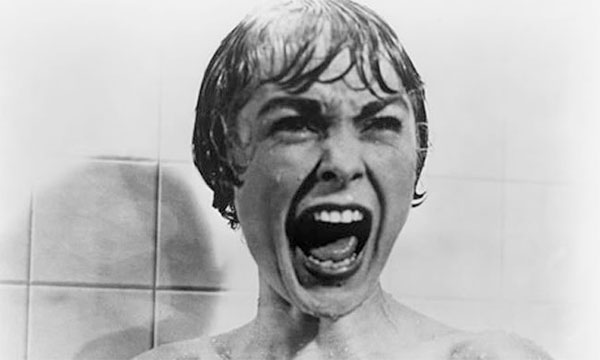
Alfred Hitchcock’s 1960 classic Psycho is a landmark film in the world of horror cinema whose many infamous scenes have inspired countless of filmmakers.
The movie follows the story of runaway secretary Marion Crane (Janet Leigh) who steals a lump sum of money from her employer and whilst running away, ends up checking into Bates Motel, which proves to be a fateful decision. Ran by Norman Bates (Anthony Perkins) and Mother, the infamous twist at the end of the movie remains a pivotal point in modern cinema.
What is interesting about the sound in Psycho is the fact that the overbearing character presence of Mother is portrayed completely by sound, with no physical visual of the character attached to this sound. This poses quite an interesting scenario for the viewer, who for the main duration of the film is lead to believe that Mother is in fact a real and physical character until the reveal at the end of the movie.
When we learn that Mother is in fact an illusion in Norman’s mind, we view many scenes in a different light when analysing the sound and visual relationship. For instance, when Marion first arrives at the motel and is invited to eat with Norman in the house, Mother’s voice can be heard arguing and disciplining Norman for inviting another woman into her house.
With no physical manifestation of Mother onscreen, this character is entirely performed from the use of sound, used in such a way that gives the character of Mother an almost all seeing/knowing element that adds to the suspense of the movie. The term for this type of use of voice in film is acousmêtre; a term coined by film theorist Michael Chion.
Not only does this give the character an almost omniscience role, it achieves a layer of suspense to the drama that in the case of Physco has the power to completely change our response to the drama upon first viewing and further viewings once the twist is known.
The voice of Mother also blurs the lines between being a non-digetic and meta-digetic sound in the final scene, where we are hearing Mother’s voice from the inner thoughts of Norman for the first time, transcending from its previous manifestation as an all powerful and dominating presence to that of the inner ramblings of a psychotic murderer.
4. Apocalypse Now (1979)
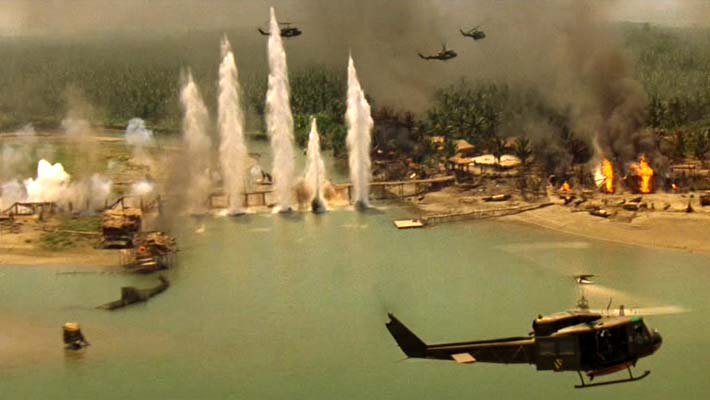
Francis Ford Coppola’s pivotal war masterpiece brings the viewer on a dramatic journey through the Vietnam war from the perspective of an American platoon. Boasting an incredible cast and powerful story, this film is a must see for any cinema fan. As with all Coppola films, Apocalypse Now employs a great use of cinematography combine with great sound choices that strengthen the story telling power of the film.
Sound designer Walter Murch worked with Coppola to combine an unique sound design into the film making process to create a sonically and visually stunning work.
Even from the opening sequence, the importance of the relationship between the sound and visual is clear. Fading out of a blank shot, Murch expertly creates a sound scape that suggests the image of a helicopter by integrating the pulse of a helicopters blades into the Doors track “This is the End”.
This enhances the lucid dream like sequence of Captain Willard (Martin Sheehan), integrating shots of the fan in his room with suggested sounds of helicopter activity outside the hotel room, but ultimately confusing the viewer as to the source of this sound.
However it is perhaps the most famous scene from this film that is a multi-layered sound and visual experience that combine to enhance the layers of drama for the viewer. With Richard Wagner’s composition The Ride of the Valkyries being played as a digetic sound over shots of the american soldiers flying to attack an innocent Vietnamese village. The music sounds menacing and has perhaps associated this particular piece with a negative association in cinema since its use in Apocalypse.
In the scene, Captain Killgor (Robert Duvall) acknowledges the menacing sound of Valkyries by asking his soldiers to turn it on by saying; “It will scare the hell out of the slopes – my boys love it!”. The use of the music here adds a particular satirical feel to the scene, perhaps suggesting the disregard that the soldiers have for the life of the innocents they are firing on.
However, the epic and grand sound of the music as is so often associated with Wagner also contributes an element of power and force to the fleet of helicopters as they swarm over the sea preparing for the attack.
Again this is an example of music being used in a suggestive sense to bring out more emotions of a scene than just that of what the visual is portraying. This is an important and effective use of sound as it allows for many more conceptual layers to be added to the film, which provides the viewer with a deeper level of drama to grasp on to.